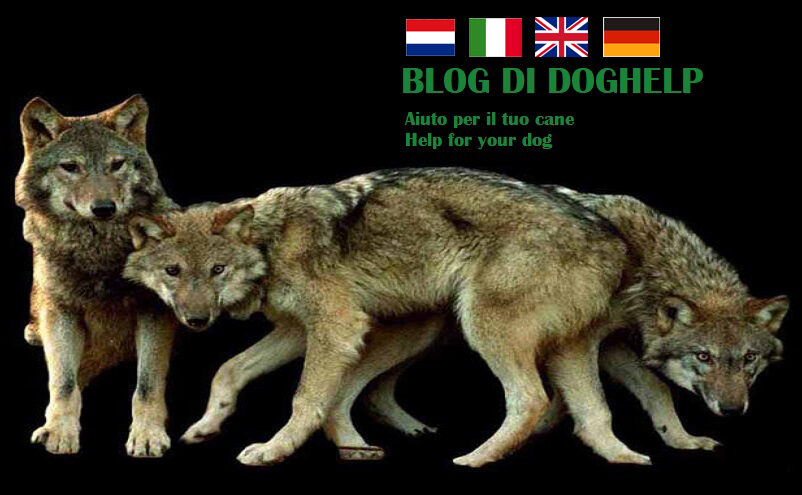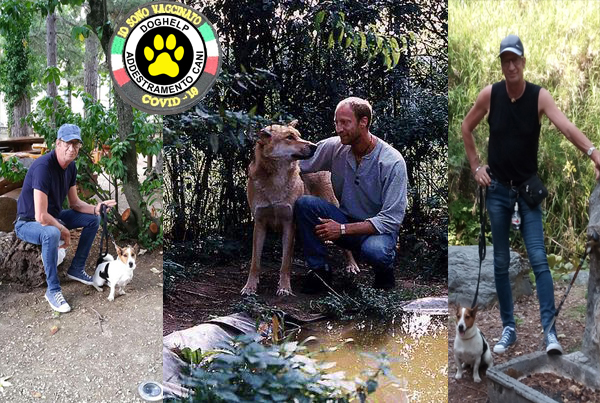In this article I would like to elaborate on the communication of the dog.
Dogs mainly communicate physically. Using their physical capabilities, they can communicate flawlessly with each other. The communication possibilities of dogs are identical to those of their ancestor, the wolf.
When a dog owner learns to “read” these so-called dog body language, an important basis is laid to understand the animal.
The main communication means of the dog are the ears and the tail.
In the diagram below you can see how the position of the ears varies from showing humble behavior to aggressive behavior.

The following diagram shows, concisely, the position of the tail in the various moods of the dog; It should be mentioned, however, that several dog breeds carry an attended tail position.
For example: the Jack Russell Terrier carries his tail and ears naturally high. Because of this he constantly shows a dominant attitude towards other dogs.
Dear reader, when reading this article, I would appreciate it if you click on an advertisement once in a while. These ads allow me to write this Blog. Thank you <3 When you like this article, please share with your friends <3
A.Start medium high. This is the basic position of the tail. The dog is relaxed.
B.Start high. The dog’s tail stiff and straight up means threatening, agitated or aggressive. In combination with upright hair on the back and tail, this may mean that a dog is willing to go into the attack.
C.Start horizontally. With a horizontal tail you can assume that the dog is alert and probably focuses on something.
D.Staart low. The dog is insecure and submissive and does not feel at ease.
E.Staart between the hind legs. When a dog is anxious or insecure, he keeps the tail between the hind legs. Often with a curved back.
Unfortunately, miscommunication arises due to docked tails and ears in the various dog breeds.
In many countries it is fortunately no longer allowed to amputate the tail and ears of a dog for cosmetic purposes. The amputation of the tail and / or the ears causes a lot of miscommunication in dogs, because they can not ‘read’ each other. The owner can not properly see whether a dog, fear behavior, aggressive behavior or other behavior is showing.
On the picture below of a Dobermann, you can see that a docked tail and docked ears show a continuously challenging posture of the dog.
The following diagram indicates the combination of tail and ear positions of the dog during the confrontation with another dog; However, the dog will also show identical behavior to you, his boss.
- Self-confident,dominant in the presence of another dog
- Endangered or warned
- Trying to impress, excitement as he wags the tail from left to right
- Carefree
- Uncertain threat / caution
- Attitude during the meal
- Act as a follower of the pack leader
- Fierce about a possible threat, defensive.
9, 10 and 11. These are indicators for the presence of another dog of the highest rank; acting as a subordinate of the leader of the platoon. In such cases, it is important that people do not intervene in the package hierarchy.
It is therefore always wise to understand how your dog feels and what your dog is trying to tell you. This allows you to train your dog more effectively and you can also build a stronger relationship with the animal.
Below is a final diagram of the various attitudes that a dog shows to both his owner and other dogs;
The postures of tail, ears and body described above are decisive for your dealings with your dog and the understanding of his behavior.
If you have any questions and / or remarks concerning this article, please let me know !!!
Dear reader, when reading this article, I would appreciate it if you click on an advertisement once in a while. These ads allow me to write this Blog. Thank you <3 When you like this article, please share with your friends <3






